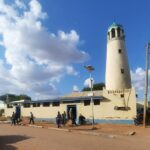 By Julia Kollewe/The Guardian
By Julia Kollewe/The Guardian
The Turkish lira recovered some of its losses on Tuesday, with the country’s finance minister pledging to take steps to support the under-pressure currency.
There was some respite for the lira after days of heavy losses. The currency rose 5% to about 6.5 to the dollar on Tuesday afternoon, after slumping 20% in the past four working days. The country’s central bank stepped in on Monday by pledging to provide liquidity to its banking sector.
Berat Albayrak, Turkey’s treasury and finance minister, and President Recep Tayyip Erdoğan’s son-in-law, provided further support with defiant comments on the national currency.
Albayrak told members of the ruling AK party: “We will protect the lira, we will march with the lira and the lira will strengthen greatly in the coming period.”
He also attacked the US currency, saying it had “lost all credibility”, despite the dollar trading at one-year highs against most major currencies.
“In times when the dollar has been turned into a tool for political punishment, we will continue to strongly take steps to protect the lira in international trade,” he added.
Turkey’s stock market also recovered, closing up about 0.75%, compared with a loss of nearly 4% on Monday.
In another defiant speech on Tuesday, Erdoğan threatened to boycott American electrical goods in response to US sanctions, and warned that those who were waging “economic warfare” against Turkey would pay a price.
Nafez Zouk of Capital Economics said: “The collapse of the lira has thrust Turkey into a currency crisis, leaving the authorities with two difficult options to prevent it from morphing into a debt and liquidity crisis: either accept an economic slowdown (and possible recession) induced by tighter fiscal and monetary policies, or resort to capital controls.”
He thought that capital controls “seem more palatable than a recession”, adding: “On their own, however, capital controls won’t solve Turkey’s problems, and will only make the adjustment process more painful down the line.”
In another sign that investor anxieties over Turkey’s market meltdown are easing, South Africa’s rand rose 1.2% against the dollar after sliding more than 9% on Monday, its biggest drop since the financial crisis.
The Russian rouble also recovered 1.8% after hitting its weakest levels since 2016 on Monday, and the Mexican peso gained 0.5%.
The Indian rupee fell past 70 per dollar for the first time, before recovering and stabilising at about the 70 level.
The MSCI EM currency index, which tracks the main emerging markets currencies, recovered 0.3% after Monday’s 0.66% drop.European stock markets rose, while the FTSE 100 index in London slipped 0.16%.
Neil Wilson, the chief market analyst at Markets.com, said: “The dollar is crushing everything in its path at the moment and this is not good for emerging markets or global growth.
“However, the fears of contagion can be over-egged and we note that the dangers so far seem confined to countries with large current account deficits and high dollar financing, as well as some corporates, largely banks, with exposure to that debt. Nevertheless, as stimulus is gradually unwound, we are seeing the markets test countries with exposure to dollar debt in a way not seen for some years.”













